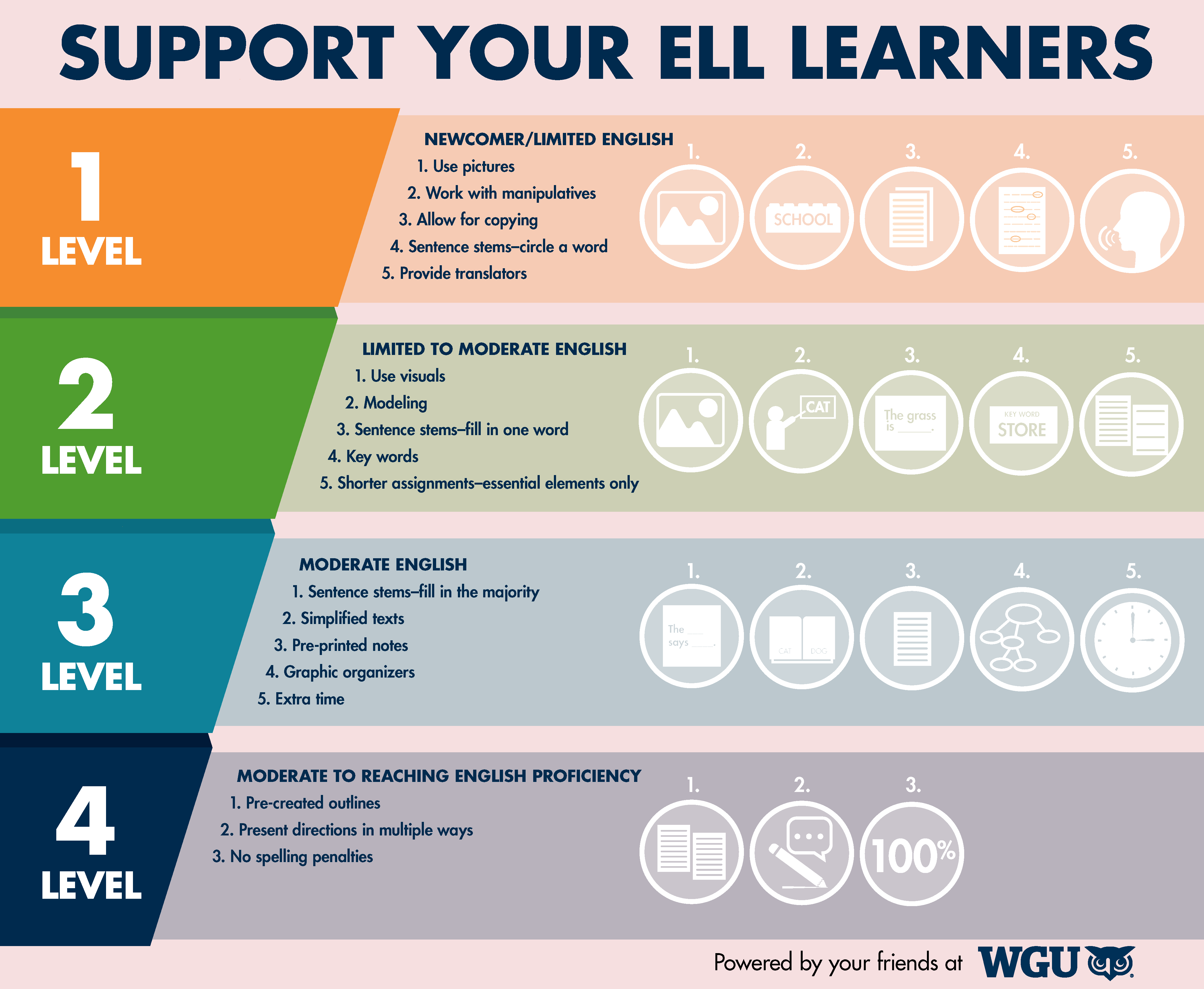What Are The Typical Learning Needs Of English Language Learners
The resource to thrive—and the laughs to survive—as an educator.
Meeting the Needs of English Language Learners: Quick and Easy Supports
English Language Learners (ELLs) are the fastest growing population of students in our school organization. According to NCELA, it is predicted that past the year 2025, ane in iv public schoolhouse students will exist an ELL. As this unique learner population continues to abound, it is benign to understand the students, as well as quick and easy means to begin to meet their diverse needs.
Who is an ELL?
An English Language Learner is also often referred to every bit Express English language Proficient (LEP). ELLs are students who are between the ages of iii-21, enrolled in school, and accept a primary linguistic communication (L1) which is not English. In lodge to meet their needs, these students require specific language instruction, in addition to the regular curriculum existence delivered as office of the grade-level content. It is imperative that educators encourage the student to proceed to develop their L1, while as well developing English. A strong foundation in the first language makes learning of the second language far easier. A typical ELL pupil volition accept five-vii years to develop a quality agreement of the English language. While a pupil volition demonstrate command of the social language first, appearing in conversations with friends to be English proficient, more than time is required to fully develop a quality understanding of the academic language needed to perform in schoolhouse.

Supporting ELLs
There are four basic levels of English language proficiency, which may increase or decrease depending on the country system adopted. Each of these 4 levels take general supports which can be put in place to allow for success of an ELL in the classroom. Each level'due south supports tin can exist used with any student, depending on the content area and student understanding in that specific expanse. For example, a level 3 pupil may require little support in mathematics and need more visuals and shortened assignments to truly understand the concepts in science. Additionally, student's level of English proficiency is not synonymous with their grade level, therefore, a tenth grader could easily be a "newcomer" and would require the same blazon of supports that a "newcomer" in third form would require.
While this listing is not comprehensive, it is a kickoff to provide an opportunity for success in an English-based classroom for an English language learner. The more opportunities that students take to speak, read, listen, and write in English, without the fear of penalization for doing/maxim something wrong, the quicker that they will acquire the English language language.

Samantha Anth
educational leader and WGU faculty fellow member
Dr. Samantha Anth is an educational leader who has spent the majority of her educational career working with and advocating on behalf of special learners: gifted and English language learners. She has taught in both the regular education classroom, as well as serving every bit a specialist. She was a goad in her school district for an culling identification policy to ensure identification of all students for gifted programming and was the first in her area to push button the utilize of project/trouble-based learning with ELLs. Dr. Anth is a proponent for applied science use in the classroom and has written about social media use with students in "Classroom 2.0 The Book." She also serves equally a kinesthesia fellow member for WGU.
Source: https://www.wgu.edu/heyteach/article/meeting-needs-english-language-learners-quick-and-easy-supports1711.html
Posted by: snowdensaidence.blogspot.com


0 Response to "What Are The Typical Learning Needs Of English Language Learners"
Post a Comment